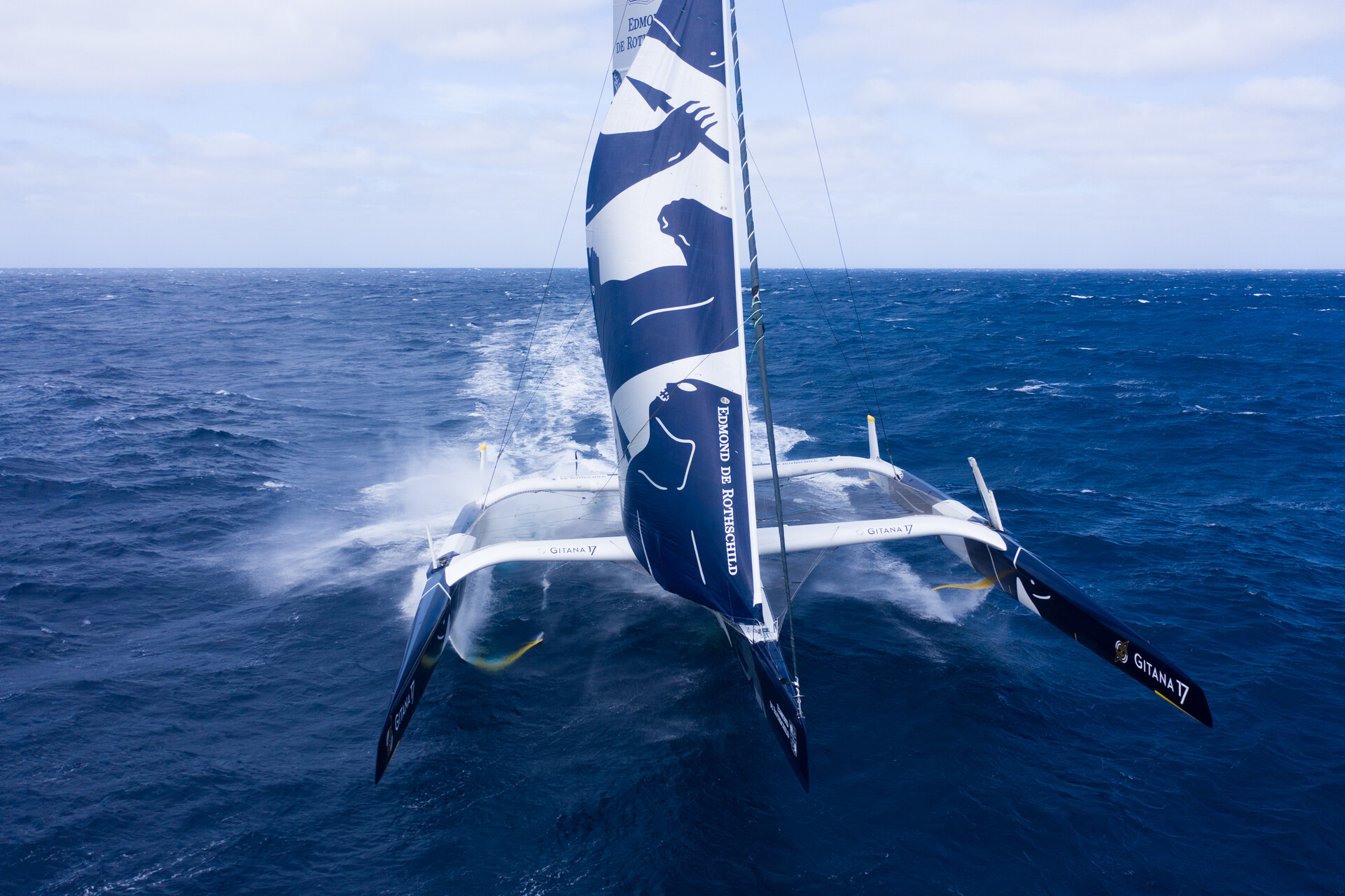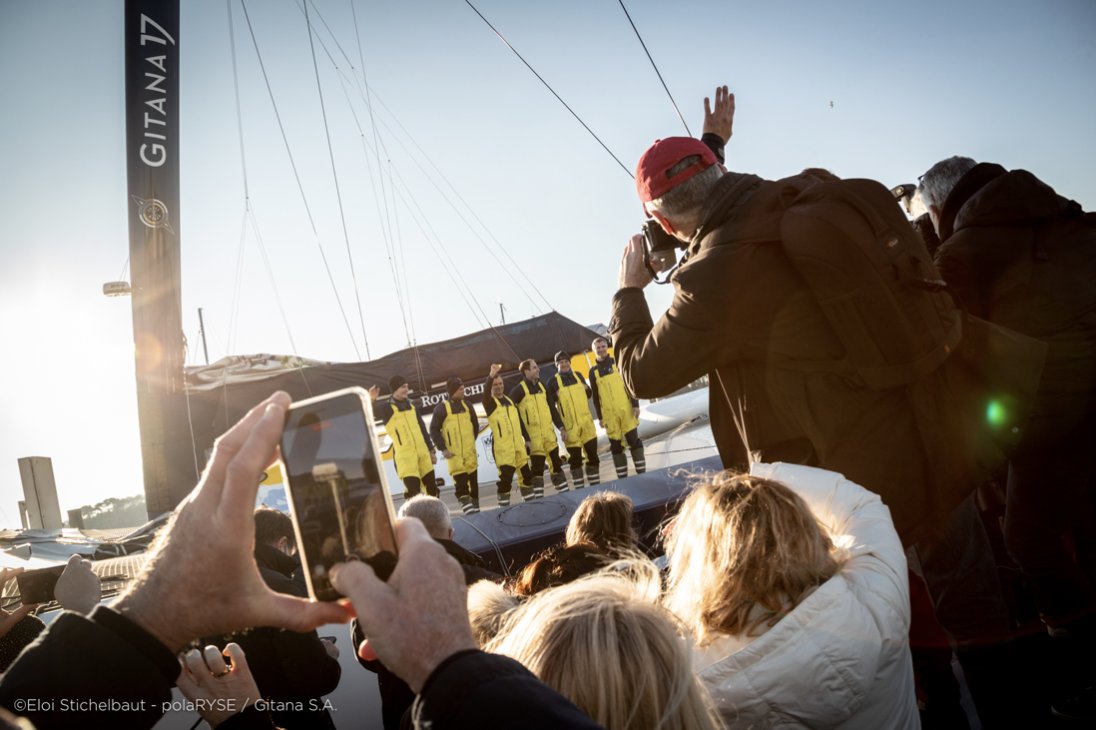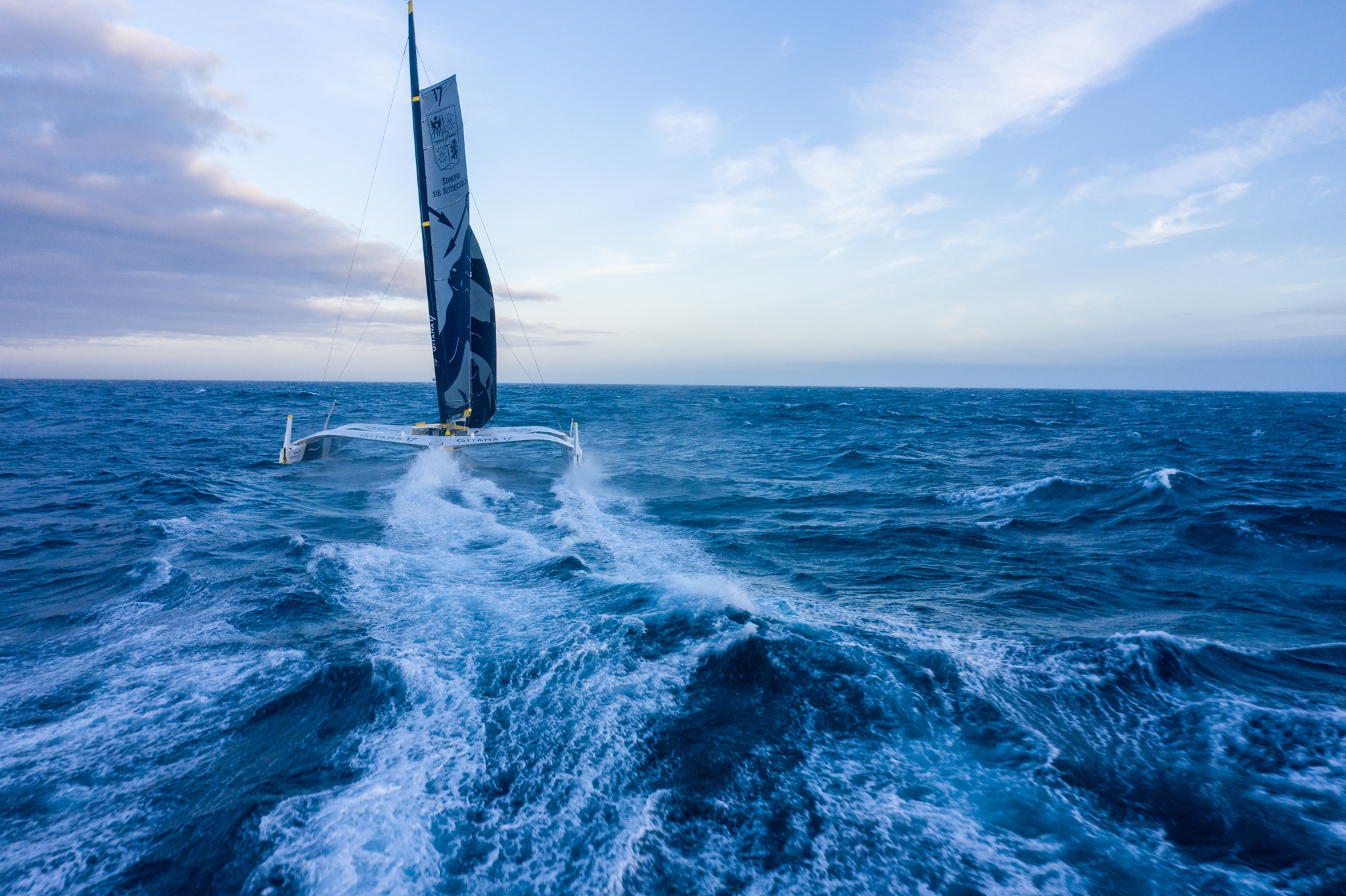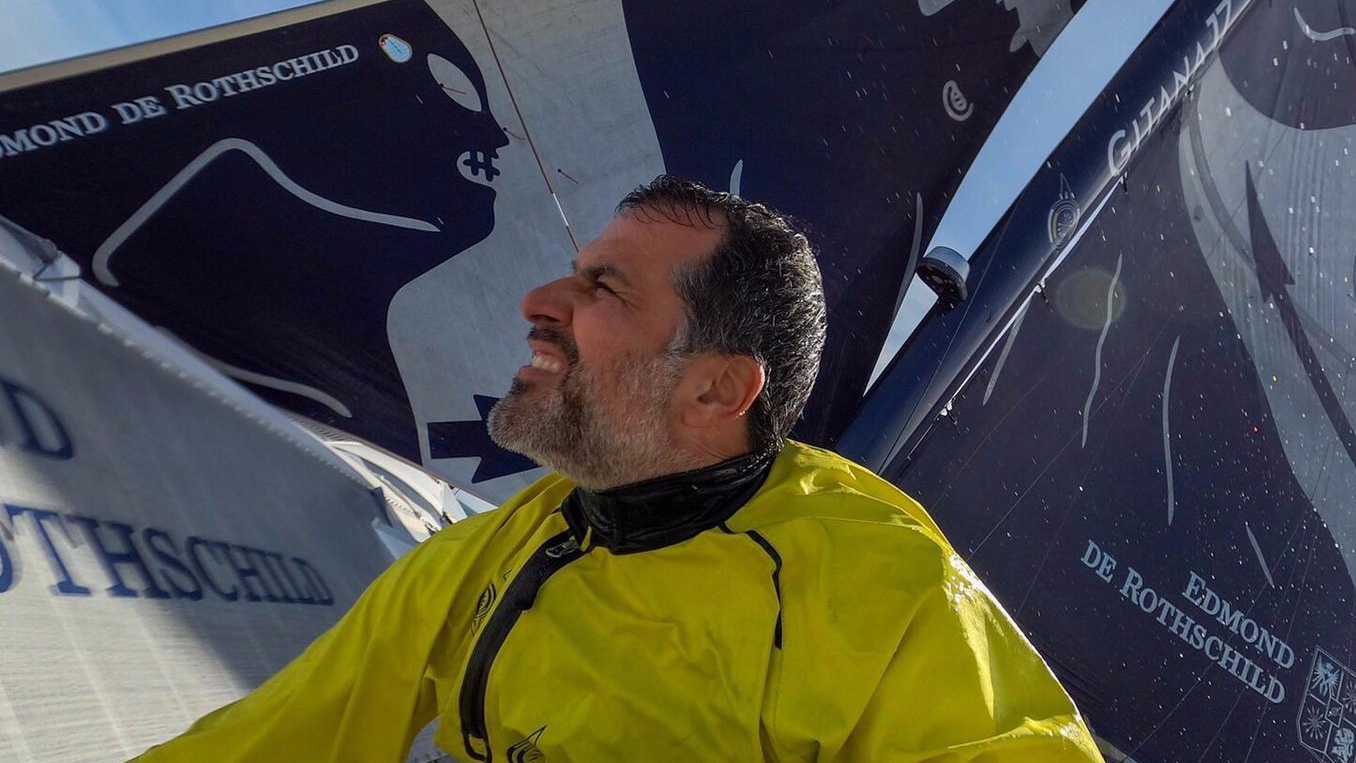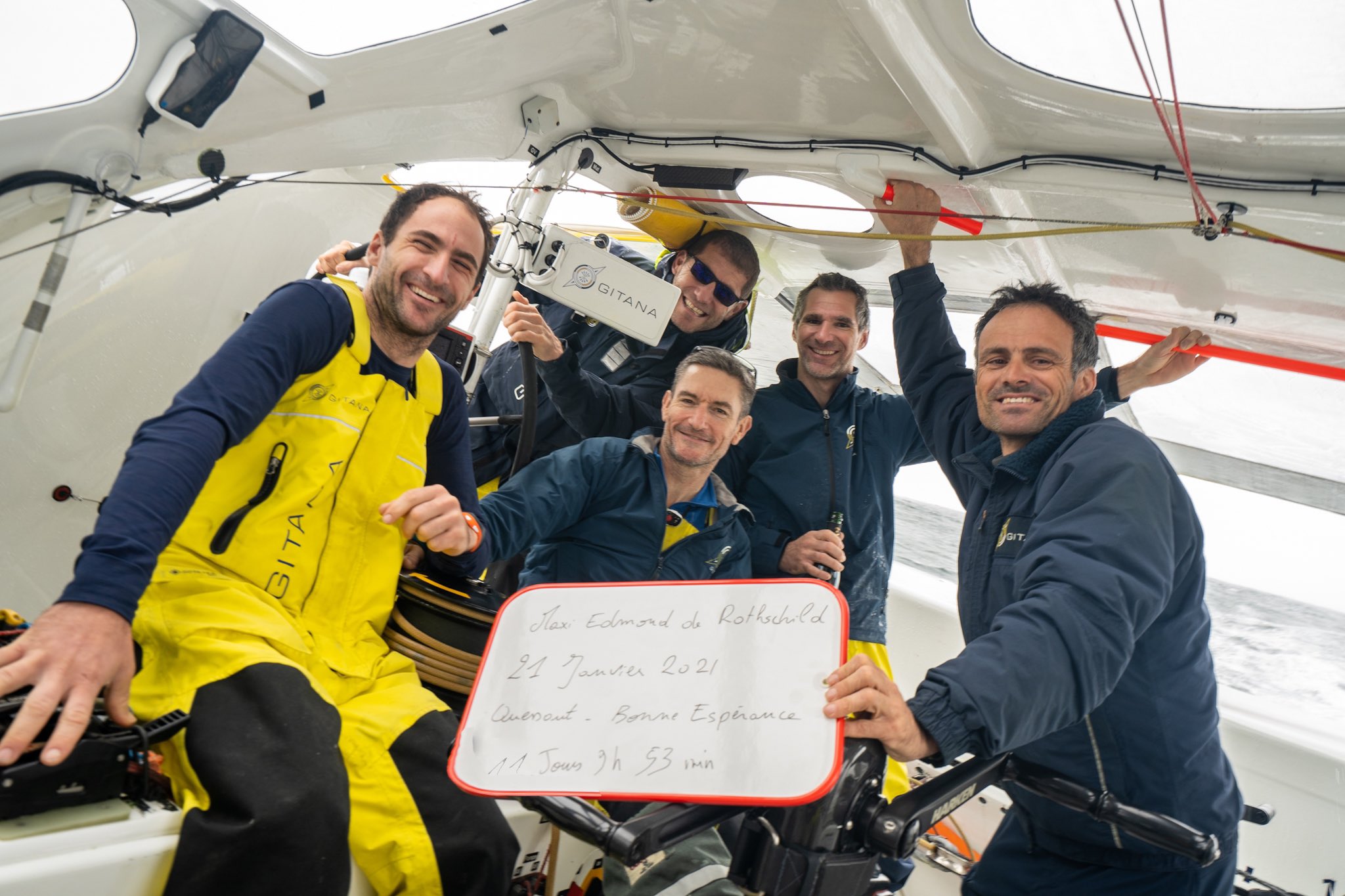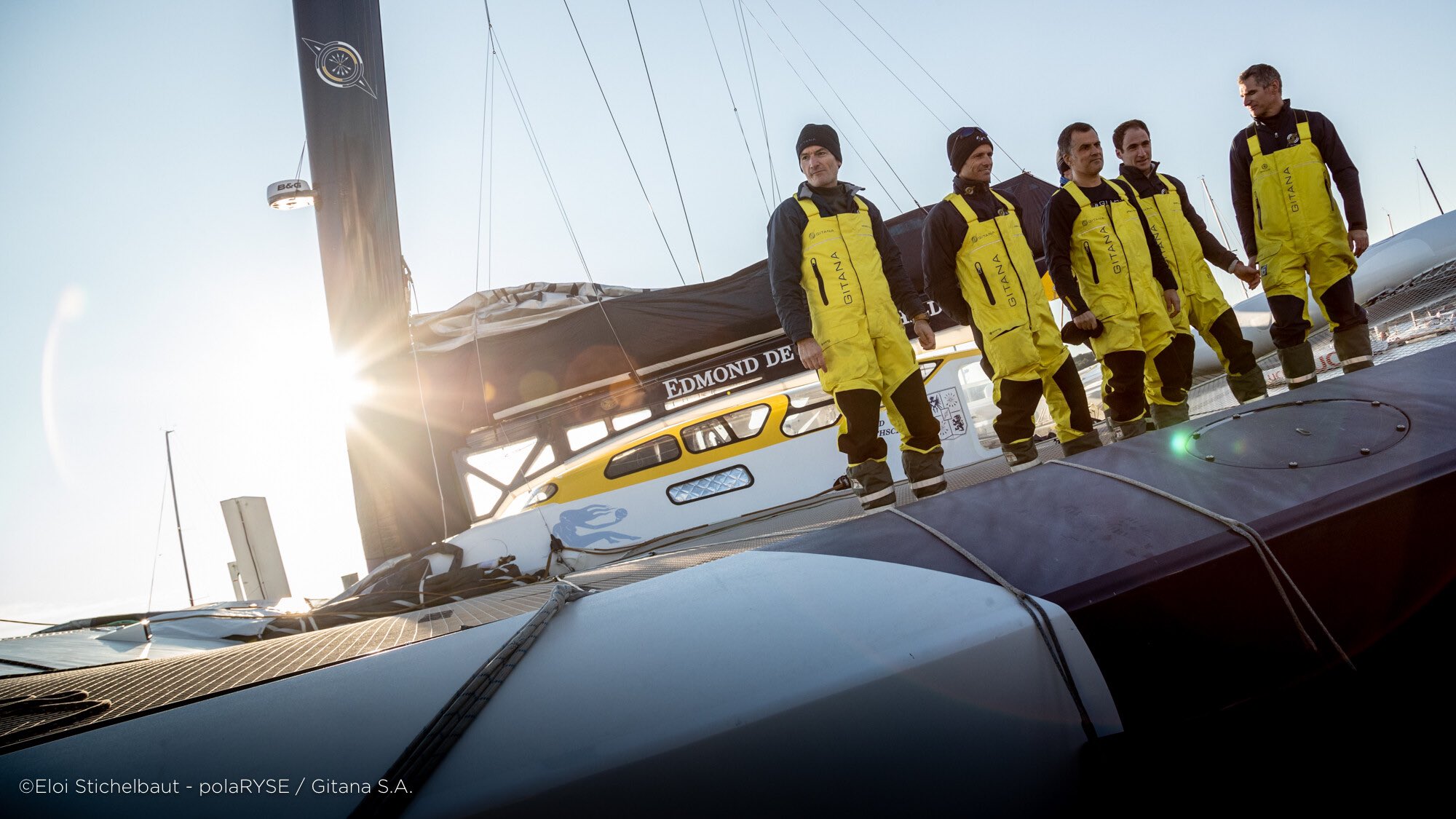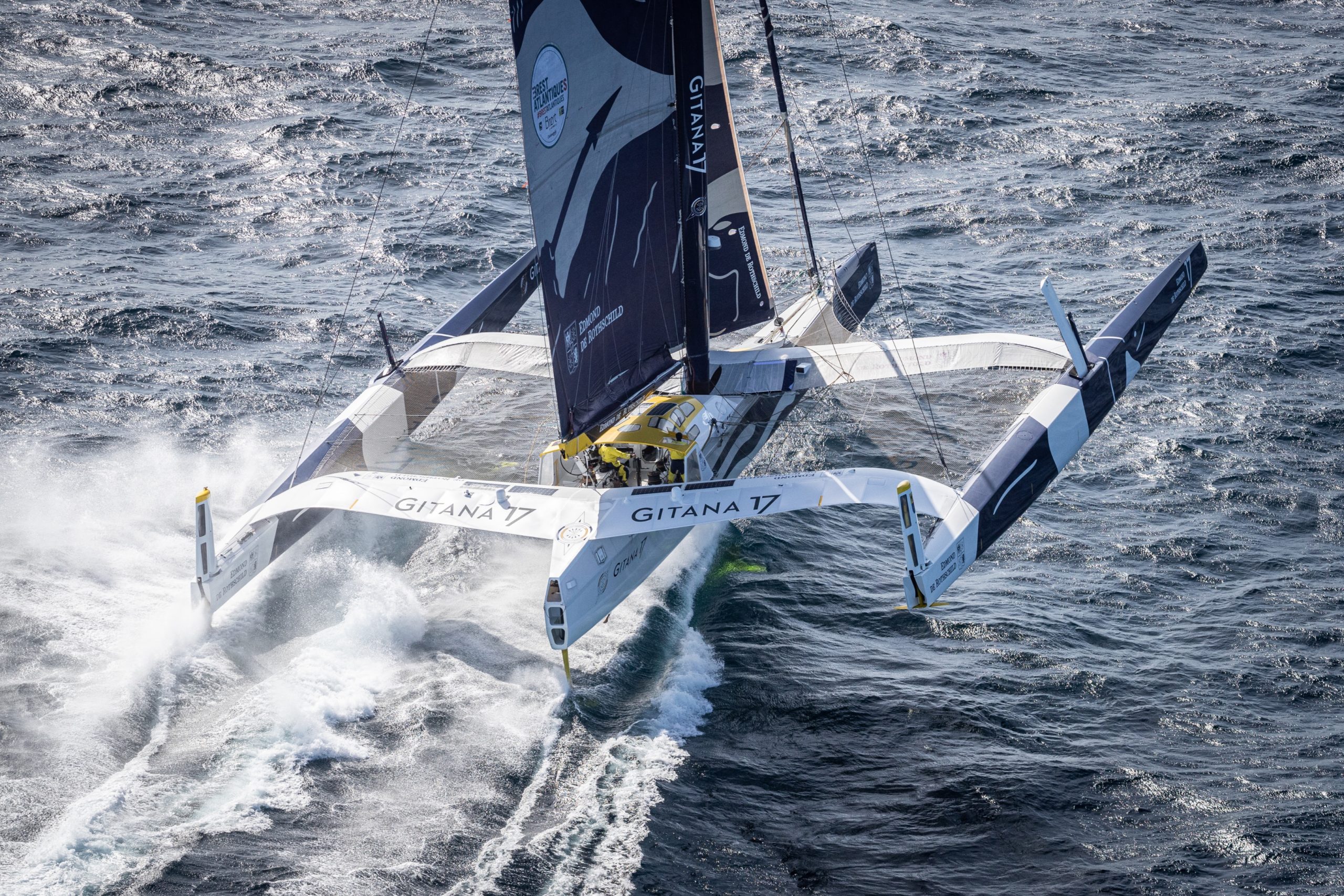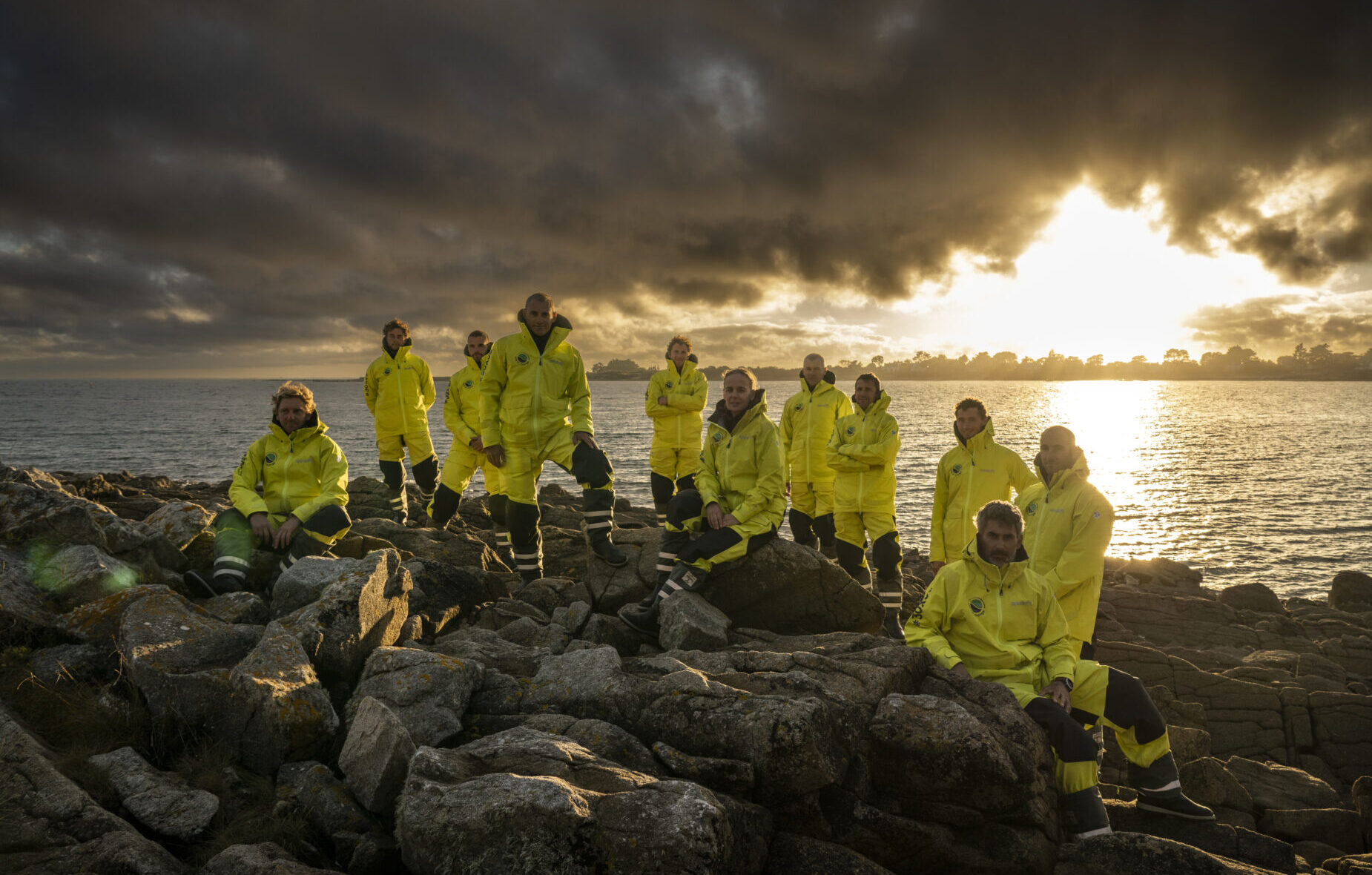
Dona Bertarelli and Yann Guichard are once more set to take on the Jules Verne Trophy, held since 2017 by Francis Joyon and his crew in a time of 40d 23h 30’ 30’’. Remodelled for improved performance over the course of last winter, Sails of Change (ex-Spindrift 2) maxi-trimaran will be sailed by an 11-strong crew.
This will be Yann Guichard’s fourth attempt as skipper on this round the world passage under sail, and he is taking on two challenges as he aims to both secure the Jules Verne Trophy and produce all their energy requirements self-sufficiently. Indeed, for the very first time, the whole journey will be undertaken with no auxiliary engine.
“We’re going to take on an additional challenge, since we’ll be attempting to break the round the world record without using any energy produced using fossil fuels. Our main sources of energy will come from the sun and wind, as well as an on-board bike-powered generator. We are keen to show it’s possible” – Yann Guichard.
This new energy challenge accompanies a series of technical solutions introduced over the winter, which relate to the cockpit, aerodynamics and central hull, the latter having been shortened by three metres. This latest modification provides improved balance at the helm and reduces vibration aboard the largest racing multihull ever built (37 metres), which has been renamed specially for this attempt: Sails of Change.
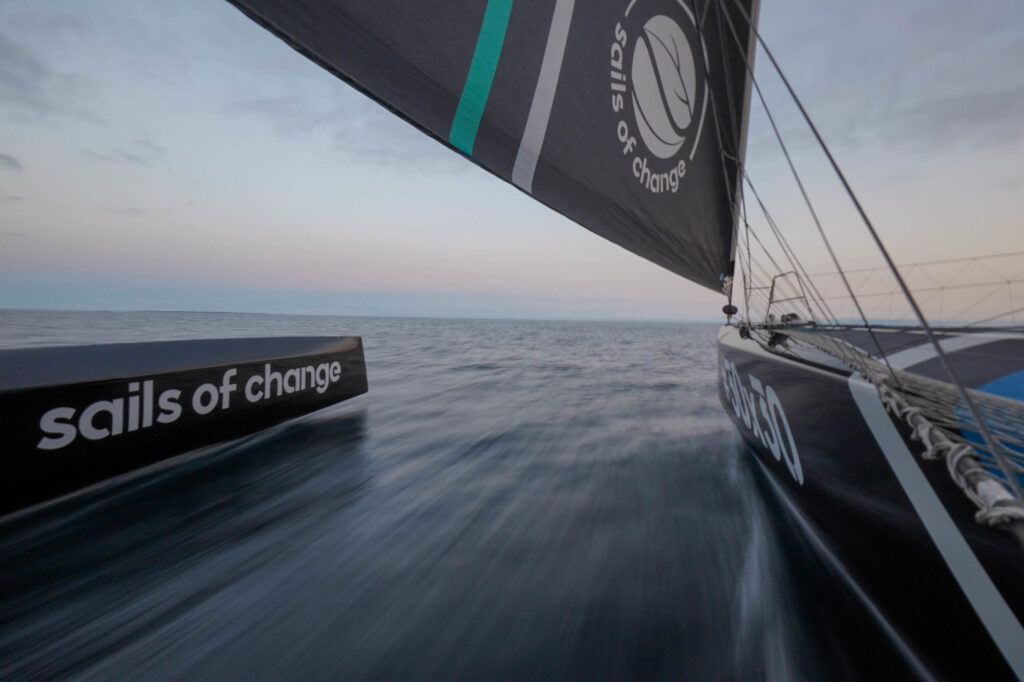
About Sails of Change
Sails of Change is a community of sport and nature lovers, who want to create a sustainable future for our planet. Founders Yann Guichard, Dona Bertarelli and her children are committed to sharing ideas and information, as well as creating partnerships to protect and restore the environment, and working for a sustainable future for all.
The first campaign supported by Sails of Change, ‘30×30’, is a global call to action to protect at least 30% of the ocean and land by 2030. The maxi-trimaran will carry this message around the world, with #30×30 logos emblazoned on her sails and hulls, together with distinctive blue and green colour-coding for the new livery on the racing stable’s flagship.
“Through the medium of a sport that we love, I invite everyone to embark with us on this human adventure, discover the beauty of nature and join us in our circumnavigation of the globe,” says Dona Bertarelli, on-board reporter for this latest attempt.
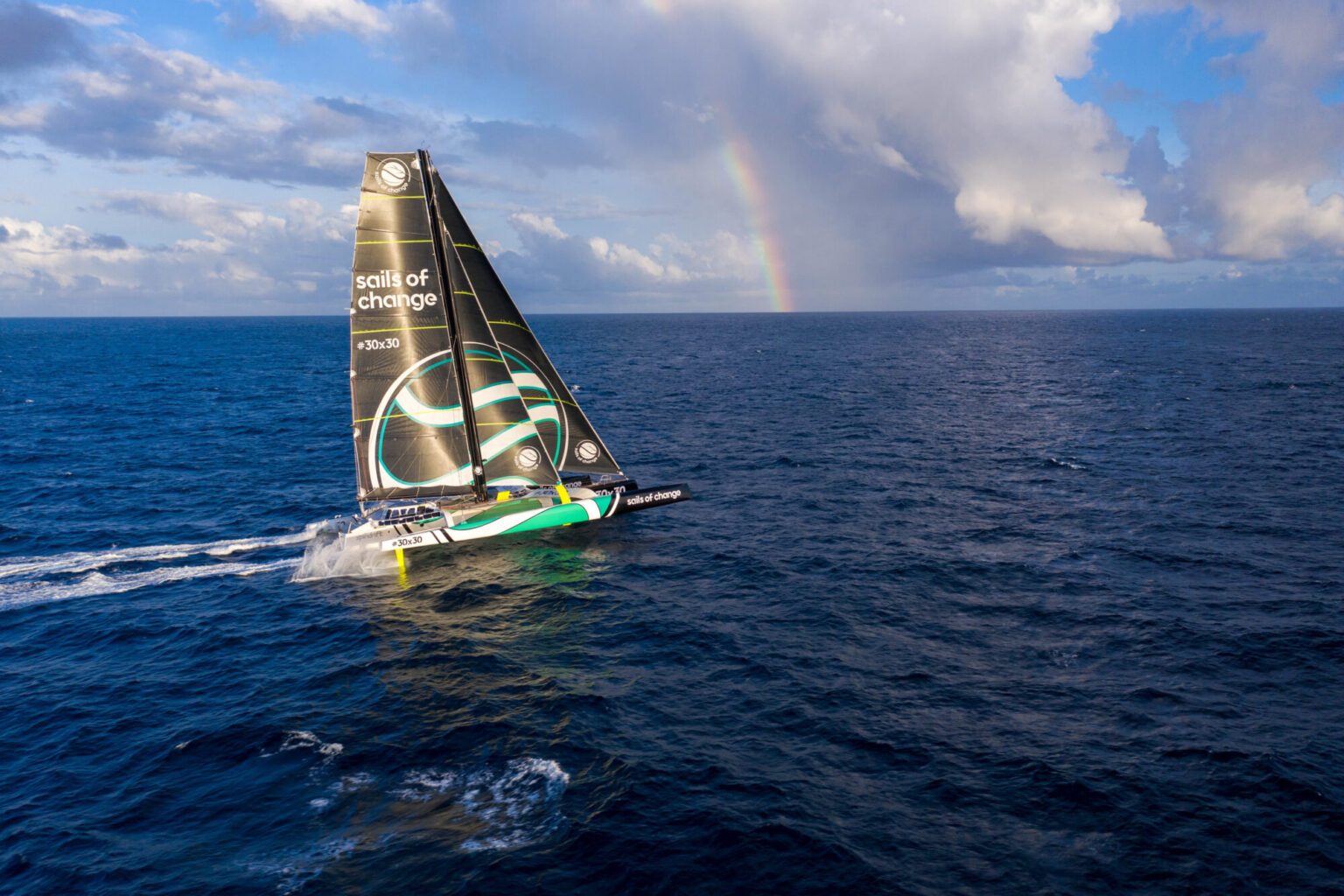
About Spindrift for Schools
The Sails of Change maxi will also fly the flag of the Spindrift for Schools educational programme, whose educational kit “Inspired by Nature: committed to action!” has just been published in partnership with the Departmental Service of National Education of the Morbihan region, the French Réseau Canopé in Lorient, Brittany, and with the support of UNESCO.
“Our aim is to inspire, raise awareness and prepare young people as they become the adults of tomorrow. We hope that through our passion and our commitment to nature, we can share knowledge and values to support children as they learn to work together and commit to their future,” explains Dona Bertarelli.
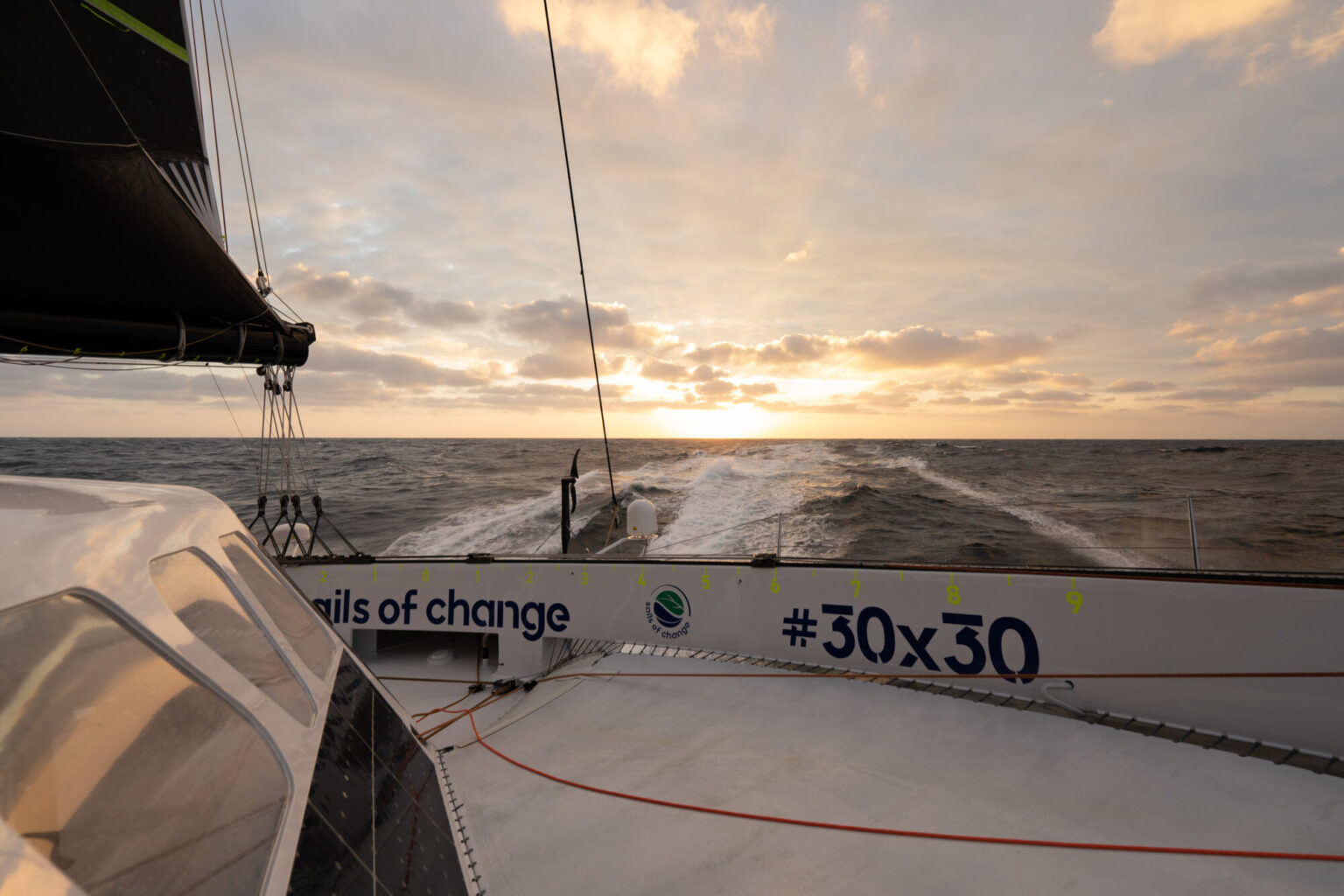
On standby from 1 November
The maxi-trimaran Sails of Change will set out from La Trinité-sur-Mer in south-west Brittany to make for the start line off Ushant as soon as there is a favourable weather window, with a standby commencing 1 November 2021.
Ten sailors with complementary backgrounds, five of whom have already circumnavigated the globe, will set sail alongside skipper Yann Guichard on this fourth crewed attempt. Two of them, Thierry Chabagny and Xavier Revil, won the Jules Verne Trophy in 2012, whilst Dona Bertarelli has held the title of fastest woman to sail around the world since 2016. In all, nine of the eleven sailors have previously been involved in a Jules Verne Trophy attempt. Only Julien Villion and Yann Jauvin will be making their Trophy debut in this legendary international offshore racing event.



